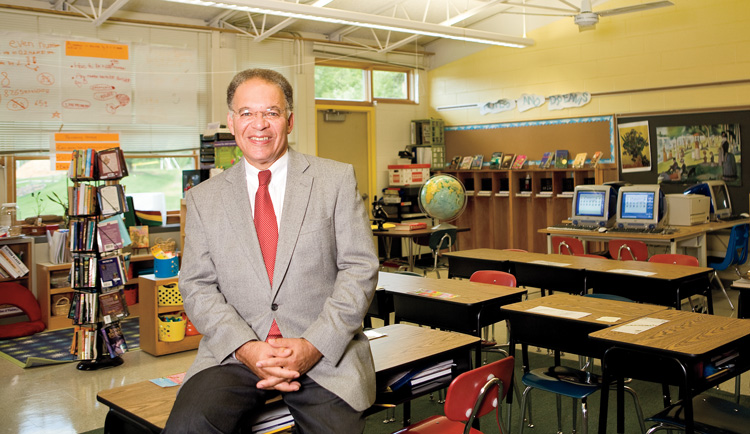The U.S. military has turned around the lives of many troubled young people, but not for the reasons you might think.
By William Sweet
[Education] When Hugh Price ’63 argues that schools should borrow from the military playbook to help low-achieving students, he’s not talking about shipping kids to boot camp.
Instead, he’s concluded that ROTC and military schools succeed for a reason that might come as a surprise: they value social and emotional growth.
“The U.S. military figured out long ago how to nurture the potential of aimless young people,” wrote Price, a senior nonresident fellow of the Brookings Institution, in a recent Education Week article.
As he notes, the achievement gap between poor and rich children, and between white children and children of color, has widened in the United States. In fact, according to a 2012 report from
the Schott Foundation for Public Education, only slightly more than half of black male and Latino male ninth-graders graduate from high school in this country within four years, compared to 78 percent of white, non-Latino males. This disparity has grave economic implications for a nation with a growing minority population, Price says.
Price’s career has taken him from The New York Times editorial board, to WNET (New York City’s public radio station), to the National Urban League, among many other places. He began his legal career serving poor clients in New Haven, Conn. As a vice president of the Rockefeller Foundation, he oversaw investments to improve education for at-risk youth. There, he began studying the military model, eventually approaching the National Guard to launch its Youth ChalleNGe Program.

ChalleNGe now operates 22nweek residential programs on various U.S. military bases, serv- ing roughly 5,000 teenaged high school dropouts per year. The goal: a high school diploma or GED, or, barring that, functional literacy. Cadets work on community service projects that incorporate reading, math, planning and teamwork, and they learn techniques for dealing with anger, stress and frustration. They also learn job skills, physical fitness and hygiene. National Guard reservists are on staff.
The National Guard reports that ChalleNGe has graduated more than 121,000 cadets since 1993, with 60 percent earning a GED or high school diploma while in the program.
Price envisions public schools similarly devoted to the academic and social development of struggling youngsters. For example, trained life coaches could “mentor, monitor, and minister to the social and emotional needs of the students,” he wrote in Education Week.
Price visited Amherst this spring to donate his papers to Archives and Special Collections at Frost Library. The visit came as he was promoting his latest book, Strugglers Into Strivers: What the Military Can Teach Us About How Young People Learn and Grow (Small Batch Books, which is owned by Fred Levine ’78).
John Merrow, education correspondent for PBS NewsHour, included the book in a list of a dozen recommended titles about education. Price has also been hitting education conferences to broadcast the message.
He knows that invoking the military sits poorly with some in the education world. But he is pragmatic: “The message is about the critical importance of social and emotional development,” he says, “and making sure that kids who are on the cusp of school failure have intensive social and emotional support.”